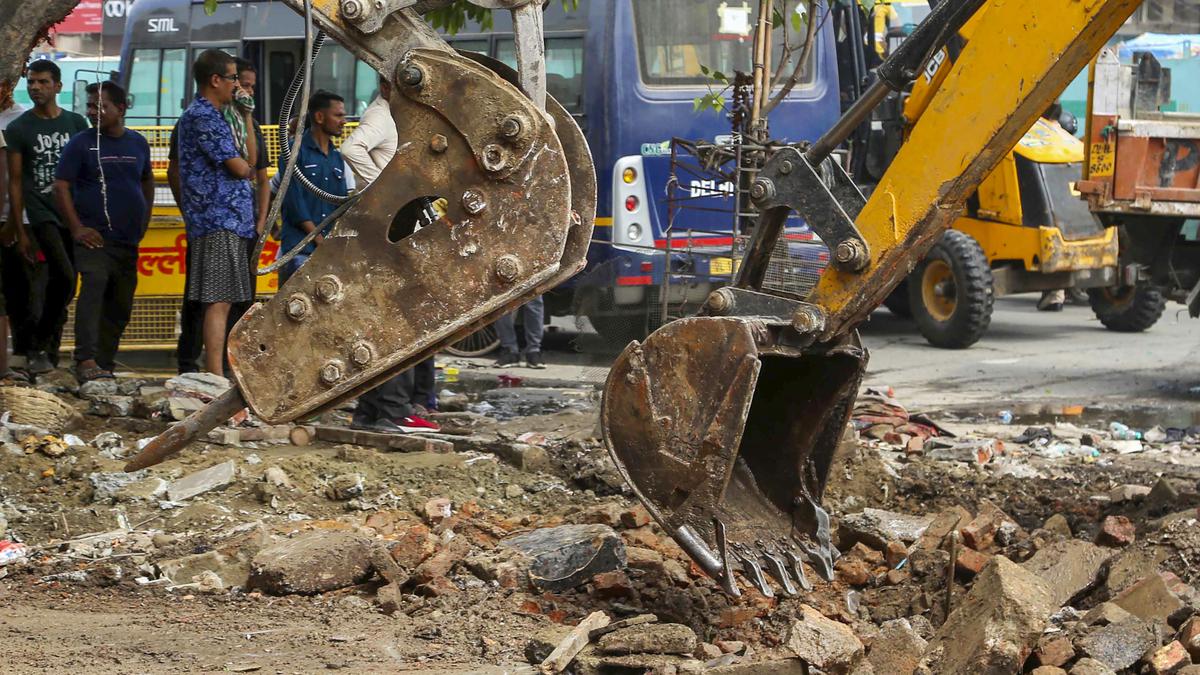
The changing contours of Delhi
The Hindu
India's population, young median age, and concentrated cities require equitable and sustainable economic development. A spatio-economic assessment framework can facilitate better planning and investment decisions in mega city-regions, ensuring well-planned, inclusive growth and valuing planetary resources.
India’s decisions on economic development, growth, and related planetary boundary challenges have become all the more significant as it was declared the most populous country in the world, overtaking China just a few months ago. Additionally, India’s capital city Delhi is en route to becoming the world’s most populous urban agglomeration overtaking Tokyo by 2028. The nation’s 1.4 billion citizens, who are increasingly concentrated in cities, and have a young median age of 28.2 (nearly 10 years younger than China’s median age of 39), need appropriate economic development planning that is both equitable and sustainable.
The engines of India’s growth are the economies of its mega city-regions. While national and State-level policies are vital to the country’s economic development, they are not enough to meet the needs of such city-regions. A case in point is the Delhi National Capital Region (Delhi-NCR), whose extended urban agglomeration straddles several State and city jurisdictions, including Faridabad, Ghaziabad, Gurugram, and Noida. The expansion of the agglomeration has been greatly aided due to it being the national capital as well as various infrastructure investments such as the metro rail networks extending from the core to the periphery, and the proactive investments made by the contiguous States. However, the peripheral contiguous cities are categorised separately in the economic and population Censuses. Being rapidly urbanising suburbs, they lag behind the core of the Delhi National Capital Territory (Delhi-NCT) in terms of infrastructure.
Map: Establishments and employment in agricultural and non-agricultural activities in Delhi NCR in 2013–14
Only when we consider the data of this region spatio-economically can we recognise the whole agglomeration’s might, its labour pool, and its uneven development.
Delhi-NCR has the highest concentration of jobs and people in the country, and generated a GDP of $370 billion in 2015. Its challenges include increasing land and infrastructure costs, growing income inequality, poor air quality, land and water pollution, the lack of natural resources, and institutional coordination barriers. In our recently released report, the ‘Morphology of Delhi National Capital Region’s Economic Geography and its Implications for Planning’, a study of sector-wise evolution of jobs in Delhi-NCR from liberalisation in 1991 up to 2013–14 shows that the core-periphery spatial system is in transition. The core has decentralised, as is evident from rapid horizontal built up area expansion, infrastructure development, and the peripheralisation of jobs and migrants. However, this has not been accompanied by a shift to a high-wage, knowledge-based economy in the core area. Informal work persists, unemployment rates have increased, and women’s participation in the workforce remains low. The region’s per capita income has tripled, and consumption levels have risen, and the peripheries attract investment from their respective State governments. Gurugram and Gautam Buddha Nagar for example are the districts with the highest per capita income in Haryana and U.P. respectively.
The density of jobs moving outward from the centre of Delhi NCT
Delhi NCR presents a case of complementarity between its subregions, because the jobs that moved out from the ‘core’ were captured by the periphery and the ‘rest of the region’ without getting expelled from the overall region. The sectors that grew in terms of industrial output generated more employment than those that grew in technical and energy efficiency. Traditional sectors such as trade, textiles and leather still dominate, but despite increasing their employment share, their share to the region’s GDP has declined. On the whole, employment-intensive growth in the secondary, tertiary sectors has been low. A spatial mapping of jobs in terms of distance shows that economic activity peaked within a 10 km radius of Delhi-NCT, and tapered off completely by 40 km.





















 Run 3 Space | Play Space Running Game
Run 3 Space | Play Space Running Game Traffic Jam 3D | Online Racing Game
Traffic Jam 3D | Online Racing Game Duck Hunt | Play Old Classic Game
Duck Hunt | Play Old Classic Game











